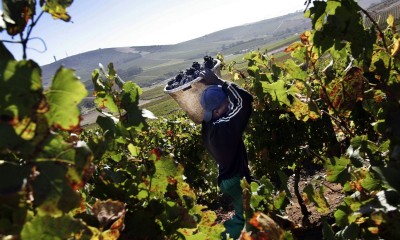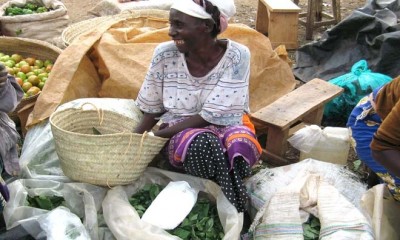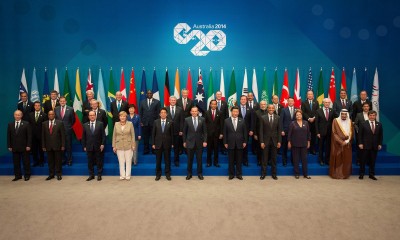Santo Domingo, Dominican Republic. Gender, Remittances and Development: Preliminary Findings from Selected SADC Countries (link),” published by the United Nations International Research and Training Institute for the Advancement of Women (UN-INSTRAW) and the South African Institute of International Affairs (SAIIA), with support from the United Nations Population Fund (UNFPA), highlights the growing impact of women’s migration on households, families and communities in selected countries of the Southern African Development Community (SADC).
The study focuses on female migration from and between six SADC countries, namely Botswana, Lesotho, Malawi, Mozambique, Swaziland and Zimbabwe, principally to South Africa. Through a combination of literature review, focus group discussions, and personal interviews, the study documents the changing role of women within migratory flows in Southern Africa, explores the potential impact of the increase in women who migrate independently as heads of households as well as migrants’ access to financial and other services.
With over 16 million migrants, Africans account for one fifth of global migrants. Projections indicate that by 2025, one in ten Africans will live and work outside their country of origin. In particular, South Africa has the largest number of foreign-born persons (excluding irregular migrants). “In the past, women in Southern Africa were often prohibited from migrating. Today, with an increasing number of African women migrants, traditionally male-dominated patterns of migration are changing. Overall, women now encompass 37.4% of regular migrants from the SADC region to South Africa,” stated Hilary Anderson, Information Officer at UN-INSTRAW.
The UN-INSTRAW/SAIIA study found that the informal economy is a significant source of employment for women migrants, who are most likely to work as vendors, street traders, or hawkers. According to a 2006 survey that monitored over 85,000 traders passing through 20 border posts connecting ten countries in the SADC region, 70% of all traders at the main border post between South Africa and Zimbabwe were women. The informal economy generally provides low incomes, which has a negative impact on integration in the destination country and the ability to send remittances. In the mining sector, some women migrate with their husbands or partners and provide services to male mine workers. In the case of Lesotho, the increase in unemployment among Basotho men in South African mines has forced women to migrate to the capital of Lesotho to work in textile companies, or to migrate to South Africa.
“Women migrants are more likely to be disadvantaged by the migration experience than their male counterparts. While South Africa is an increasingly popular destination for migrants in numeric terms, it is often an intimidating and unstable destination, where women migrants suffer violence, overt hostility and social exclusion, as well as economic exploitation,” emphasized Elizabeth Sidiropoulos, National Director of the South African Institute of International Affairs (SAIIA). “These trends have negative repercussions on salaries, working conditions, labour stability and, consequently, on remittances,” she continued. In the case of Southern Africa, extremely little data are available regarding the sending, utilization and impact of remittances, particularly by women. While we know that women both send remittances as migrants, and receive them as heads of households, we still don’t know what the implications of these different roles are for women’s economic and social status. The UNINSTRAW/SAIIA study highlights that the total value of remittances has quadrupled from less than US$2 billion in 1990 to US$8 billion in 2005. This could have significant implications for the well-being and development of the households and communities that receive remittances.
Existing research in SADC countries, including that conducted by the Southern Africa Migration Project (SAMP) shows that remittances are significant in enabling households to meet basic needs and buy basic services. An overwhelming number of households (93%), purchase food and groceries with remitted funds. “Cases of investment of remittances in productive activities exist in Swaziland, particularly in agriculture, and in Mozambique, in building materials. However, there is no evidence of the emergence of new economic activity generated by the receipt of remittances. Remittances protect human development because they allow families to pay for education, health, electricity, water and other services, when they are not provided by the State,” stressed Hilary Anderson.
In the context of Southern Africa, formal remittance channels, including banks, the post office and money transfer agencies, are expensive and notoriously slow in terms of transfer times. To-date, the majority of remittances are sent informally through migrating friends or relatives (31.9%) and taxis drivers (21.3%). In addition, the great majority of migrant-sending households (85%) receive remittances as cash. “In this context, women are less likely than men to have access to formal banking and other financial services.
In Botswana and Swaziland, for example, women have to provide permission from their husbands or fathers before they can open a bank account. This is a significant obstacle to women’s ability to make the most of the income they send or receive as remittances,” stated Elizabeth Sidiropoulos.
As the majority of migrants carry remittances themselves, the regularity and frequency at which remittances are received is related to how often they return home. On average, 59% of households received remittances once a month, with those in Lesotho (77%) being most likely to do so and those in Mozambique (20%) being least likely to do so.
The data and information reviewed in the UN-INSTRAW/SAIIA study point to an urgent need for more research on the migration of women and their role in sending, receiving and utilizing remittances. In particular, data should be disaggregated by sex so that we have a better of idea of how many women migrate, for what reasons (employment, family, etc.), how they experience life away from their families and how this migration is changing household formation and dynamics.
In addition, the UN-INSTRAW/SAIIA study calls for increased dialogue on the policy context of migration in Southern Africa that takes into account the extremely diverse nature of migration in this region, which includes permanent, temporary and contract migration, localized mobility, asylum-seekers and refugees, and irregular migration. Migration policies should also take into account women’s changing role in migratory flows, and reflect the needs and priorities of women migrants in terms of mobility, access to employment, personal security, and access to financial services.
Read the “2007 Survey on Migration, Remittances, Gender and Development in Selected SADC countries”.
Additional Information
About UN-INSTRAW
The United Nations International Research and Training Institute for the Advancement of Women is devoted to applied research, training and knowledge management in partnership with governments, the United Nations Agencies, civil society and academia to achieve gender equality and women’s empowerment.
About SAIIA
The South African Institute of International Affairs is an independent non-governmental organization that aims to promote a wider and more informed understanding of international issues among South Africans.
Press contact:
Ms. Valeria Vilardo
Communications Assistant
UN-INSTRAW
vvilardo@un-instraw.org
Tel: 1 809-685-2111 ext. 227







